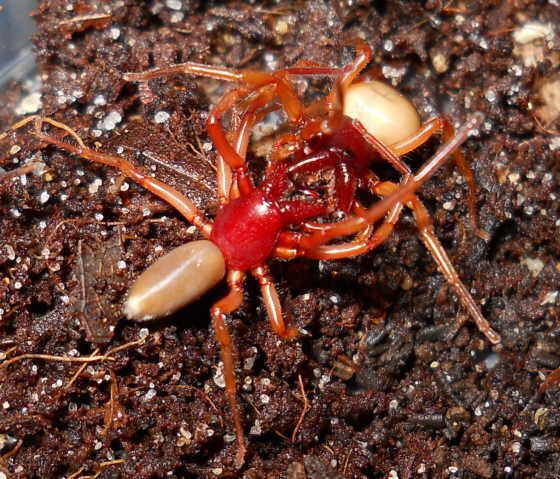Wayfarin
Arachnoknight
- Joined
- Mar 20, 2022
- Messages
- 237
Hey folks!
Perhaps some people on this forum are aware of my former post on the range of the woodlouse spider, Dysdera crocata.
However, I've been wondering. Why is this spider so rare in the arachnid-keeping hobby?
They're not dangerous, like black widows. They don't have space requirements, like tarantulas. They don't need to be fed very often, like active jumping spiders.
Isopods, their favorite food, are as readily available as crickets and mealworms these days.
It has occurred to me that, after watching YouTube videos on the species, most people who keep them just capture them from the wild. We live in New Hampshire, but to my knowledge, Dysdera crocata is pretty rare north of Massachusetts.
Apparently, some people have them in abundance. I cringe whenever I see people make them fight with centipedes. Apparently, some people take them for granted.
If Dysdera crocata spiders are so readily available in the wild, then why are they so hard to find captive bred? Does nobody find them interesting?
Are they hard to breed in captivity or something? Or has it just never occurred to anyone to breed them?
If anyone has read my former post, then they may also be aware that I'm interested in the common centipede, Lithobius forficatus.
I'm not as concerned about the availability of this species, as I'm pretty sure that we have them around here. Nevertheless, it would be nice if this species was also more available captive bred.
If anyone knows where to find them in the wild, then any input would be very much appreciated.
Thanks anyways! God bless!
Perhaps some people on this forum are aware of my former post on the range of the woodlouse spider, Dysdera crocata.
However, I've been wondering. Why is this spider so rare in the arachnid-keeping hobby?
They're not dangerous, like black widows. They don't have space requirements, like tarantulas. They don't need to be fed very often, like active jumping spiders.
Isopods, their favorite food, are as readily available as crickets and mealworms these days.
It has occurred to me that, after watching YouTube videos on the species, most people who keep them just capture them from the wild. We live in New Hampshire, but to my knowledge, Dysdera crocata is pretty rare north of Massachusetts.
Apparently, some people have them in abundance. I cringe whenever I see people make them fight with centipedes. Apparently, some people take them for granted.
If Dysdera crocata spiders are so readily available in the wild, then why are they so hard to find captive bred? Does nobody find them interesting?
Are they hard to breed in captivity or something? Or has it just never occurred to anyone to breed them?
If anyone has read my former post, then they may also be aware that I'm interested in the common centipede, Lithobius forficatus.
I'm not as concerned about the availability of this species, as I'm pretty sure that we have them around here. Nevertheless, it would be nice if this species was also more available captive bred.
If anyone knows where to find them in the wild, then any input would be very much appreciated.
Thanks anyways! God bless!
Last edited by a moderator:


